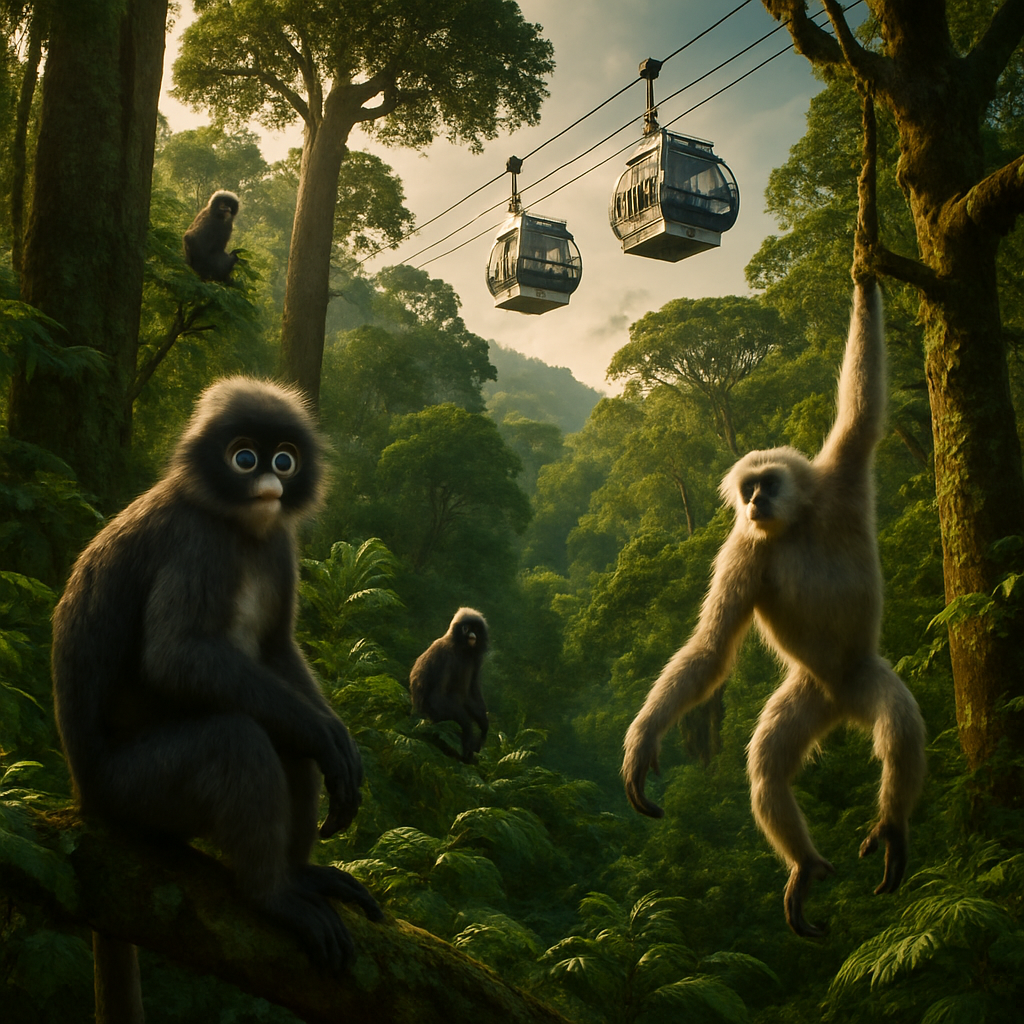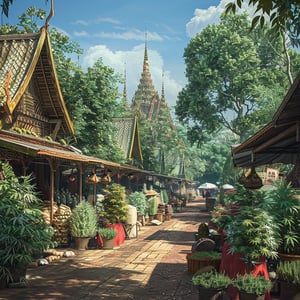Recently, the Department of National Parks, Wildlife and Plant Conservation (DNP) hit the pause button, extending the project’s feasibility studies and the all-important environmental impact assessments (EIA) by two years. This move underscores the gravity of the concerns raised. On paper, it’s about budget lines and feasibility, with a substantial 25.7 million baht (or US$775,980) earmarked through the Designated Areas for Sustainable Tourism Administration (Dasta) for development efforts. The DNP director-general, Atthapol Charoenchansa, outlined a 3-kilometre adventure from Pha Mak Dook that could ring the cash register at 1 billion baht (US$30 million) in its first phase. Ambitiously, they envision further enhancements teeming with electric buggies that could shuttle wide-eyed tourists through untouched splendor.
However, the foundation sees beyond the brochures and polished pitches. They warn that every buggy on delicate forest trails and each cable pulling gondolas skyward could chip away at the park’s ecological fabric. After all, Phu Kradueng isn’t just a spot on the map; it’s a sanctuary bursting with unbroken forests that shelter rare flora and endangered species like the elusive serows, fascinating Javan pangolins, yellow tortoises, playful dusky leaf monkeys, and ethereal white-handed gibbons. Recognized as an ASEAN Heritage Park in 2023, only the highest stewardship can safeguard its integrity.
Beyond the ecology, economic ripples question the very essence of local benefit. Can reconfiguring nature drive meaningful economic upturns, or will short-term influx sabotage long-term sustainability? As the foundation astutely observes, ease of access could swell tourist numbers faster than the DNP can responsibly manage. Can they ensure numbers don’t trample fragility into oblivion, or might they open Pandora’s box on overuse and its subsequent consequences?
Leading the charge with optimism and caution alike, local stakeholders muse whether the allure of greater tourism traffic will genuinely invigorate the economy or become another quixotic pursuit couched in vogues of modernization. While anything that endangers this pristine wilderness runs counter to national interests, the narrative unfolds along deeply personal and national lines. It’s not merely conservationists on one side and developers on the other; it’s a mosaic of voices grappling with legacy versus change.
Some see futures lit by tourism’s proverbial candle light, but the Seub Nakhasathien Foundation wagers on a different kind of illumination — one that guards what some might call the last wild places with a resoluteness equaled only by the natural world itself. They understand that missteps, however well-intentioned, might echo through forests and fade into echoes of regret. Development doesn’t just pave pathways; it can unlock doors to declassification — slowly, insidiously.
Each detail of this unfolding saga begs patience, urging a more harmonious dialogue between tradition and transformation. As things stand on this beautiful May 5 of 2025, it’s clear: Phu Kradueng holds court as a virtuoso, its tranquil rhythms at risk of turning cacophonous. May decisions made in sterile conference rooms honor the wild symphony playing here, where every tree sings its own song of unyielding perseverance.


















This cable car idea is ridiculous! Why ruin such a beautiful place just for some tourism money?
I completely agree, Sammy. It’s about preserving what little untouched nature we have left.
But what if the cable car helps more people enjoy the park without damaging it too much?
Tourism brings jobs and boosts the economy. It’s not all bad, you know.
Sure, but at what cost? We shouldn’t sacrifice nature for profit.
The fact that they even considered this project shows how little they understand about conservation.
To be fair, EcoWarrior, balancing conservation and development is complex. We need thorough assessments before making judgements.
I get that, but sometimes it’s better to leave nature as it is rather than taking unnecessary risks.
It’s crucial to weigh both environmental impact and potential economic benefit. A cable car could minimize ground disturbance compared to other options.
Honestly, I can’t wait to use the cable car. Hiking is cool but not for everyone!
That’s the problem, AdventureSeeker. The rush for convenience shouldn’t jeopardize conservation efforts.
Without environmental guarantees, projects like these are a recipe for ecological disaster.
You’re exaggerating, GreenEarth. With proper regulations, such developments could be sustainable.
Even with regulations, the cumulative impact on biodiversity could be irreversible.
As someone from the area, I worry most about how this project will affect our community and traditions.
But isn’t it possible this could bring jobs and better infrastructure to your area?
True, but our culture and environment are more valuable than short-term gains.
Tourist influx can be managed with quotas and advanced bookings. It’s all about planning.
I want my kids to see nature as it should be, not through a cable car window.
But a cable car might be the safest way for families with young kids to explore the park.
Economic growth from tourism could help fund more conservation efforts. It’s a win-win!
If we keep making exceptions for cash, soon there’ll be nothing left to conserve.
It’s about finding a balance. Strict environmental standards should be a part of any development.
I can’t believe anyone would think a cable car through Phu Kradueng is okay. It’s sacred land!
I’m worried about the project’s transparency. How will they ensure the EIAs are thorough?
I trust the authorities. They’ve delayed the project to ensure it’s done right, and that’s a good sign.
Delays don’t always mean better outcomes. It could be political stalling.